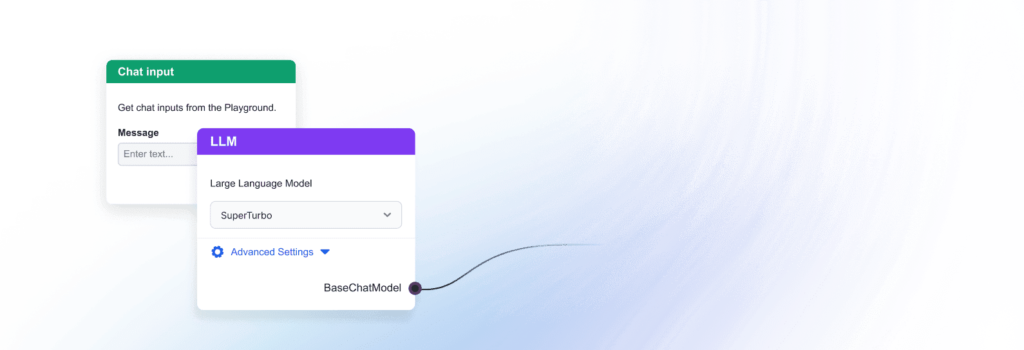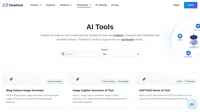When you open a fresh set of building blocks, you start connecting them with a clear idea of what you’re building. FlowHunt components are no different. You connect building blocks with the final Flow in mind, whether an AI tool or a chatbot.
Components are the essential building blocks, giving Flows new capabilities or altering the existing ones. The collection of components, along with the options of FlowHunt, is expanding every single day.

Available components groups
Think of each group of components as one capability, while the individual components are the ways to utilize and approach the capability. Here’s the complete list of component groups:
Generators
The generator component tells AI it’s time to create a text answer based on all the previous components. Generators are different from LLM components, which simply connect the model of your choice to the generator and other components. Currently, the generator uses ChatGPT-4o by default.
Agents
AI agents are capable of reasoning, performing tasks, and solving problems independently. They decide and take actions based on their programming and input data. For example, an AI agent can discern when to forward a ticket to human agents.
Tools
Tools are entire workflows condensed into a single component. Usually, you would craft a prompt and add various components to ensure precise output. With tools, you simply connect a pre-made workflow to an Agent and have it do the hard work for you.
LLMs
This group of components allows you to change the AI model. By default, all components that use LLMs use the ChatGPT-4o model. Swapping for an older model whenever 4o isn’t necessary can save a lot of money and speed up the generation of answers.
Prompts
Many Flows may look the same but do entirely different things. Why? The Prompt. It lets you give specific instructions to the AI, ensuring the Flow does exactly what you want and how you want.
Retrievers
The retrievers grab knowledge from user-specified sources. There are various types of retrievers to fill any need. Some get information from your documents and website; others allow you to search the web or crawl URLs.
Memory
We’re used to AI remembering previous messages, but the truth is that not all AI use cases need it. Moreover, having AI hold onto information costs tokens. While it’s important for chatbots to have the chat history, you can save money by skipping memory for AI tools that don’t need it to function correctly.
Splitters
Splitters help clear up any confusion by splitting the query to help humans and AI understand better. Typos, unclear instructions, vague or overly complex questions—thanks to Splitters, all these can be handled correctly.
Inputs
AI needs your input to understand what you need. Your flows will start with the information you send to chat and run it through all the other components.
Outputs
Outputs tell the Flow you’re done creating, and it’s time to print the final message in Chat. You can include several outputs in a single Flow to enhance the final message.
Widgets
Widgets bring the boring text output to life. They use metadata to create buttons, related article cards, video thumbnails, and more.
Evaluators
This group of components features various metrics tools. Combined with Prompts and other components, these allow you to measure and evaluate your input. For example, readability metrics can evaluate the readability of any text you send in the chat.
Transform
During building your Flow, you can encounter various output types. Sometimes, you need to change output types midway. That’s where Transform components come into play. For example, transform a structured document with metadata into plain text.




